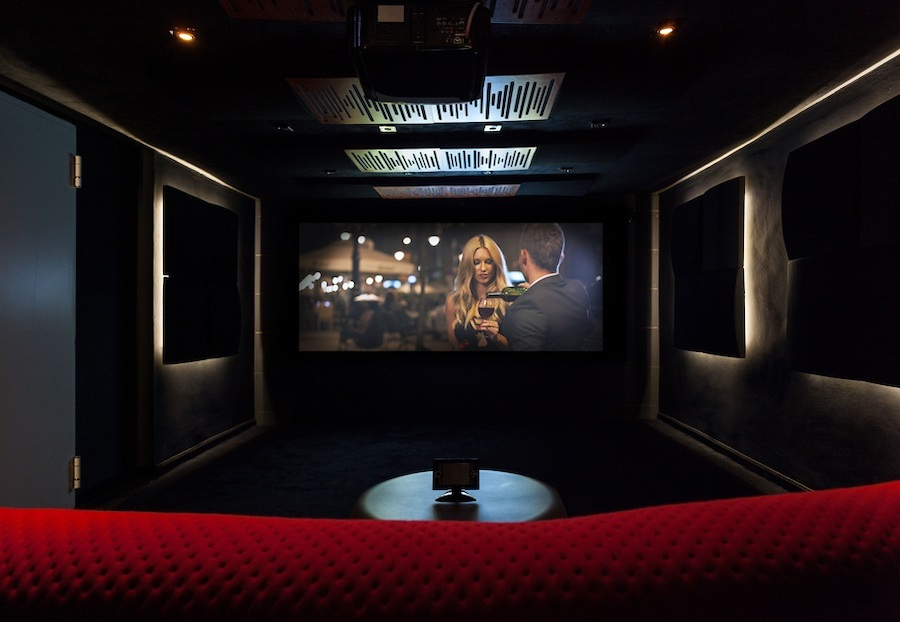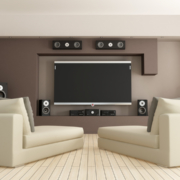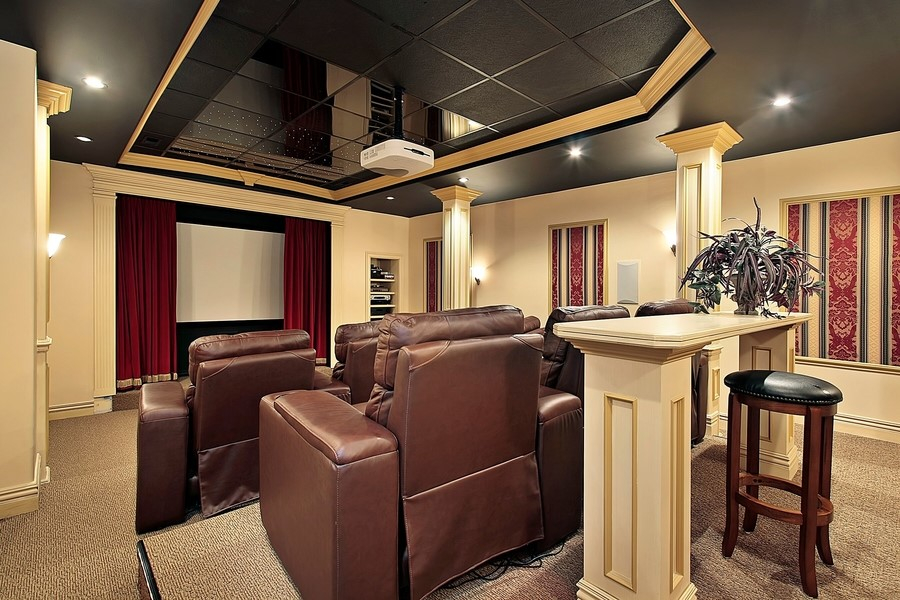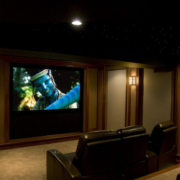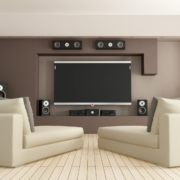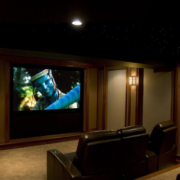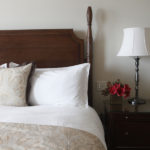How to Optimize the Audio Quality in Your Home Theater
Get High-Performance Sound with These Home Theater Design Tips
Though many people focus on the big screen when trying to recreate the cinema experience at home, delivering powerful, high-quality sound is just as important. During a scary movie or football game, it’s the immersive sound that puts you in the middle of the action. Audio should not be an afterthought in your Bethany Beach, DE home.
Even though it’s easy to oversimplify and think the right speakers will fix all your problems, a lot more than that goes into your home theater design. Read on to find out the three things that will determine whether you’re getting the best possible sound quality.
SEE MORE: 2 New Important Home Theater Design Trends from CEDIA 2019
The Environment
The first step in any home theater design is to find the right location for your system. First of all, we recommend going with a rectangular room, since a square room can lead to more audio reverberations and muddled sound. Ceilings should be no taller than 14-feet to contain the sound better, and the room needs to be wide enough to prevent seats from being directly against the wall.
Keep sound from bouncing around the room with soft materials in the form of carpeting, drapes, plush seating, and acoustic treatments. In some cases, it may also be necessary to add bass trappings, which help dampen lower frequency sound.
The Installation
Your home theater should include a professional surround sound installation. The center channel handles dialogue, so it should go right in front of you and as close to the screen as possible. The speakers to each side of the screen are equidistant from each other and you—creating an equilateral triangle. Surround sound speakers can go just above ear level while some go right behind your listening position. Additionally, there will be at least one subwoofer in the room to add bass support. Since we use Dolby Atmos, we also need to incorporate speakers that provide sound from above.
Once we have installed the speakers in the right place, it’s time for manual calibration. Though many receivers and speakers come with auto-calibration features, you should also have a professional fine-tune your surround sound. This ensures that as Dolby Atmos signals move from speaker to speaker, there is no variation in volume and that all audio reaches you at the same time. Finally, we deal with the proper bass crossover between your speakers and the subwoofer.
The Equipment
Ultimately, your theater will only be as good as the equipment you have no matter how great your environment and installation. Not only should you add high-performance speakers, but high-end AV receivers should be included to get the best signal possible.
Dolby Atmos works different than typical surround sound, with signals moving freely instead of being relegated to specific channels. You’ll need sources—like a Blu-ray play—with native Dolby Atmos content. For this to work, use a Dolby-enabled receiver that translates this information to send audio where it needs to go. These receivers can also upscale content mixed with regular surround sound.
Never sacrifice style for performance with a wide range of speaker models to fit your décor, including cabinet, in-wall, and -in-ceiling speakers. If your environment doesn’t allow for in-ceiling speakers, use upward-firing speakers. These Dolby Atmos speakers bounce sound off the ceiling to make it seem like it is coming from above.
Are you ready to create a truly immersive viewing environment in your home theater? It all starts with optimizing your audio. To learn more about our home theater design services, give us a call at 302-644-8110, fill out our contact form or chat with us below.

